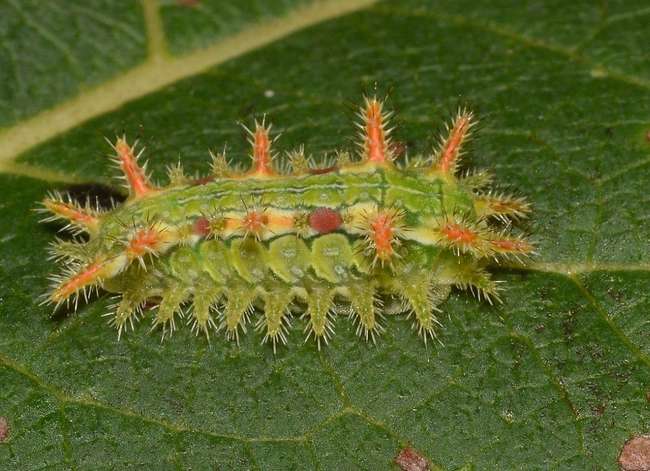

We may earn revenue from the products available on this page and participate in affiliate programs. Learn More ›
Home Advice You Can Trust
Tips, tricks & ideas for a better home and yard, delivered to your inbox daily.
Protect Yourself
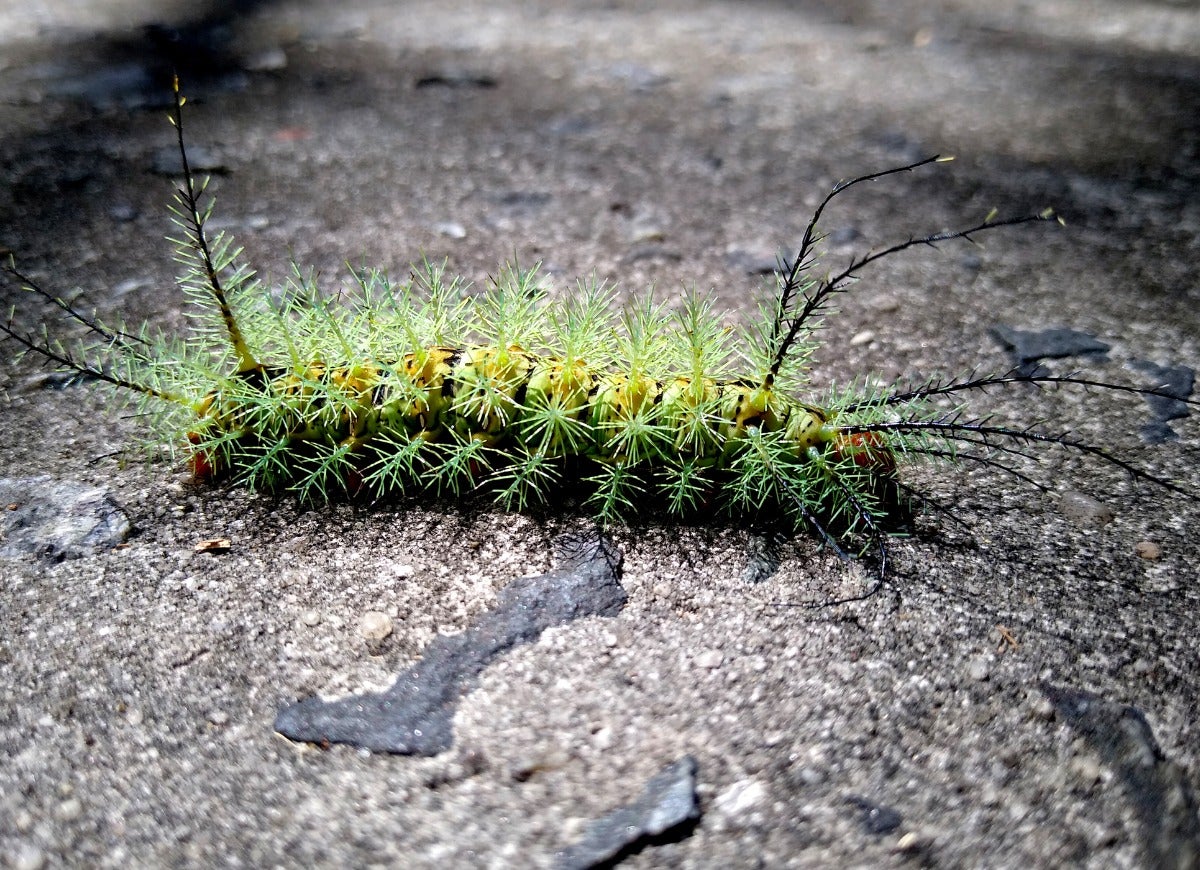
Most gardeners are aware of the slugs, bugs, and other pests that can destroy their plants. This includes many caterpillars, but a few can hurt the gardener as much as the garden. Their stings or hard spines might smart enough to warrant steering clear and taking extra precautions to keep them away from your leafy greens. Some are unmistakable, and others take a little know-how to keep them out of the garden and away from working hands.
Flannel Moth Caterpillar (The Asp)
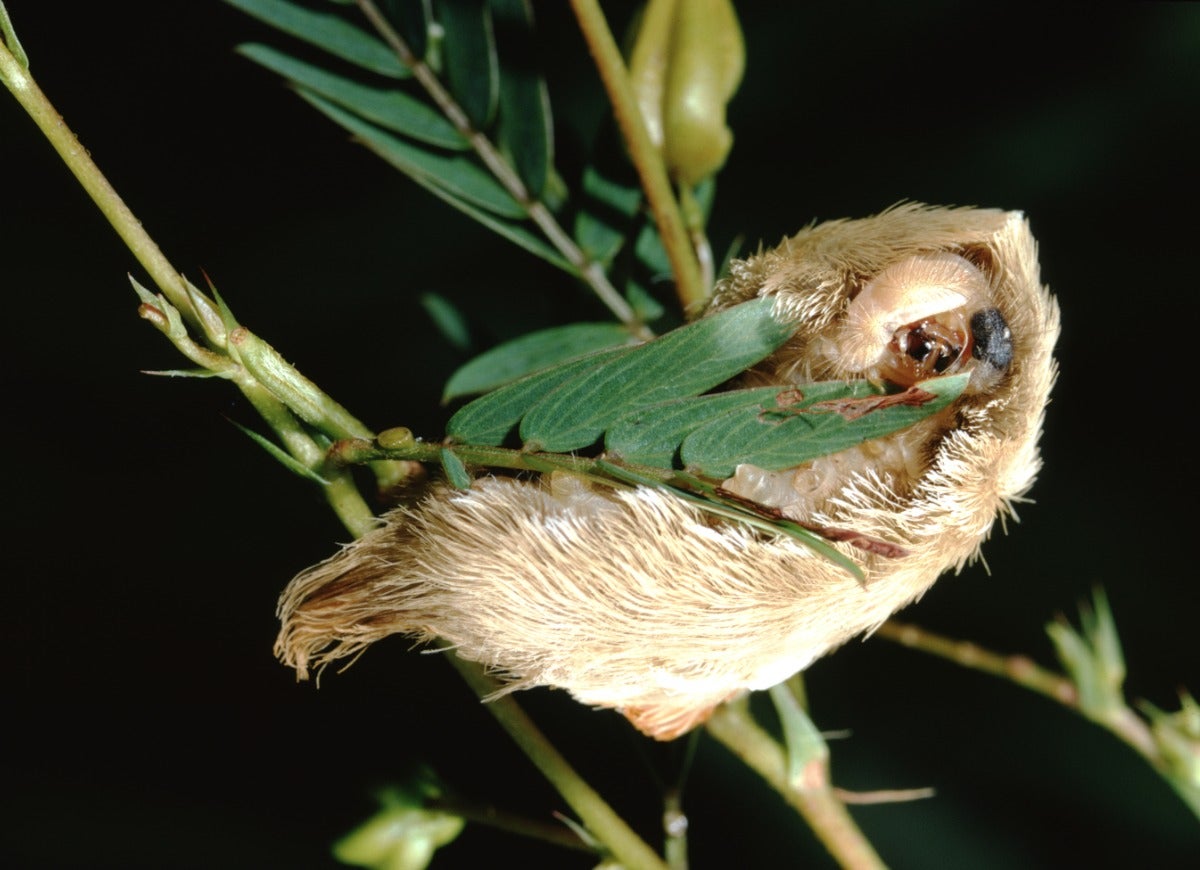
The flannel moth caterpillar, also known as the puss caterpillar, or “the asp,” is covered in fine silky hair that hides its poisonous spines. Once those spines pierce the skin, they cause a painful stinging rash that can last for several days. They’re found in Texas and a few other Southern states. However, they’re not common and live mostly in trees. Their furry bodies are hard to mistake. As long as you know what they look like, you should be able to avoid them.
Saddleback Moth Caterpillar
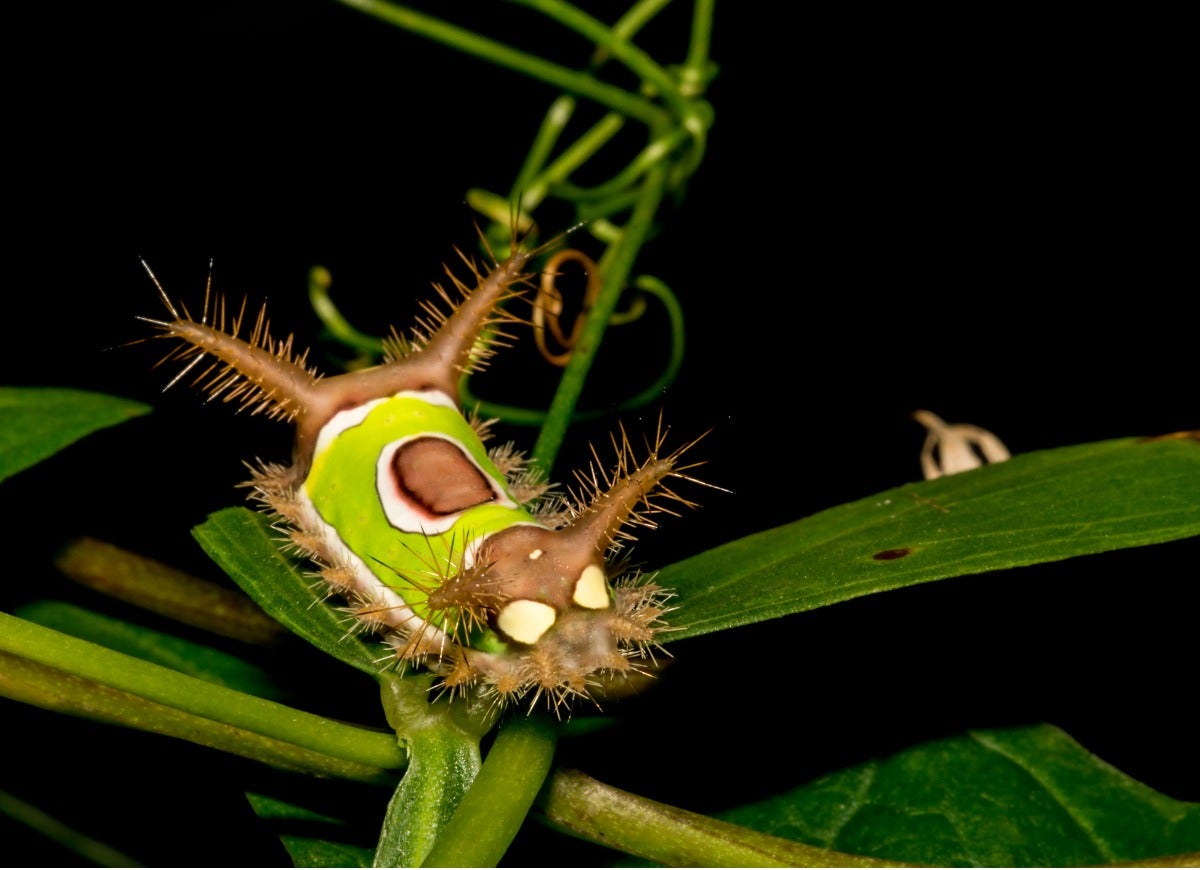
The brightly colored saddleback (moth) caterpillar is far more striking than the moth it becomes. Found in Alabama and Florida, these little guys have a fleshy pair of horns on both ends of their bodies with a bright green back and dot in the center. Once you’ve seen a picture, it’s easy to see where they get their name. The hairs on their horns contain an irritating venom that causes swelling and a painful rash.
Io Moth Caterpillar
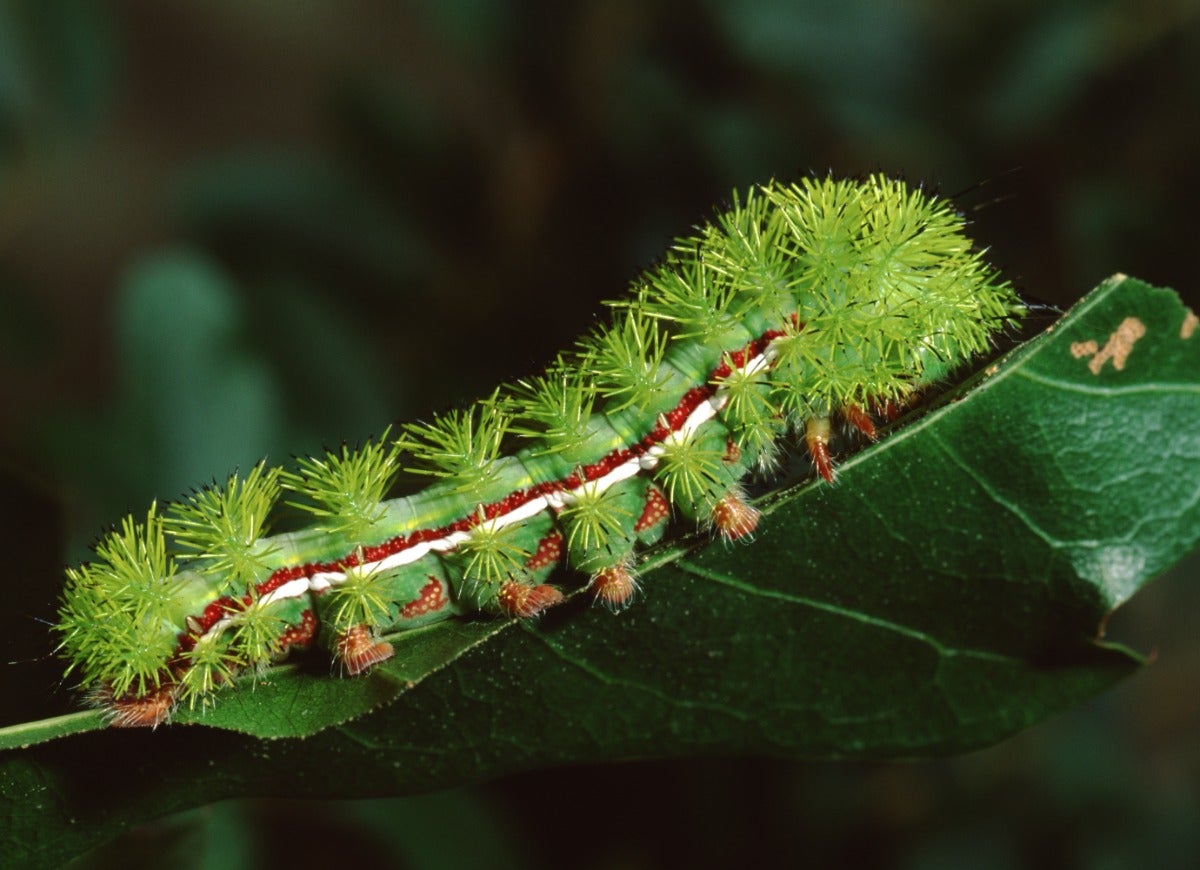
The Io moth caterpillar’s green body is covered in black-tipped venomous spines. These caterpillars live in the eastern and midwestern United States. They can be seen living together and “marching” in single file in their early stages before they venture out on their own to enter the cocoon phase. Their intense green bodies blend very well with summer foliage, making it easy to accidentally brush against the body and get a painful sting.
Stinging Rose Caterpillar
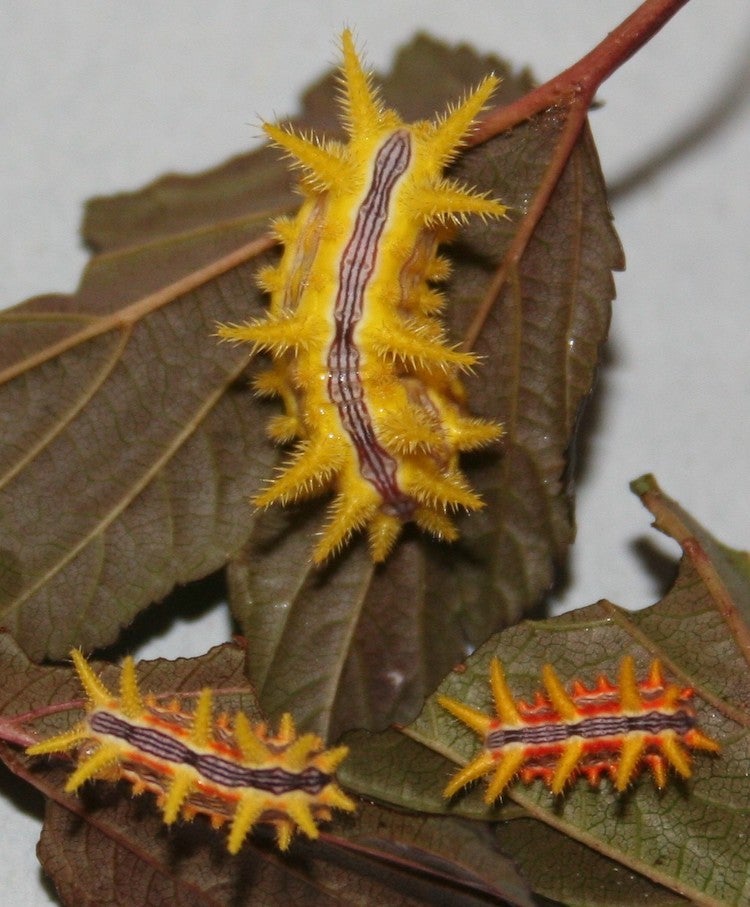
The stinging rose caterpillar’s strange appearance might attract attention but avoid this brightly colored, striped, and horned caterpillar. The stinging rose is found only in the eastern United States, and it’s relatively uncommon. These caterpillars prefer rose foliage (hence their name), dogwood, apple, cherry, oak, poplar, maple, hickory, and bayberry. Some develop red or orange stripes, while others are yellow. They’re hard to miss, and their bright colors warn enemies of their venom.
The Spiny Oak Slug
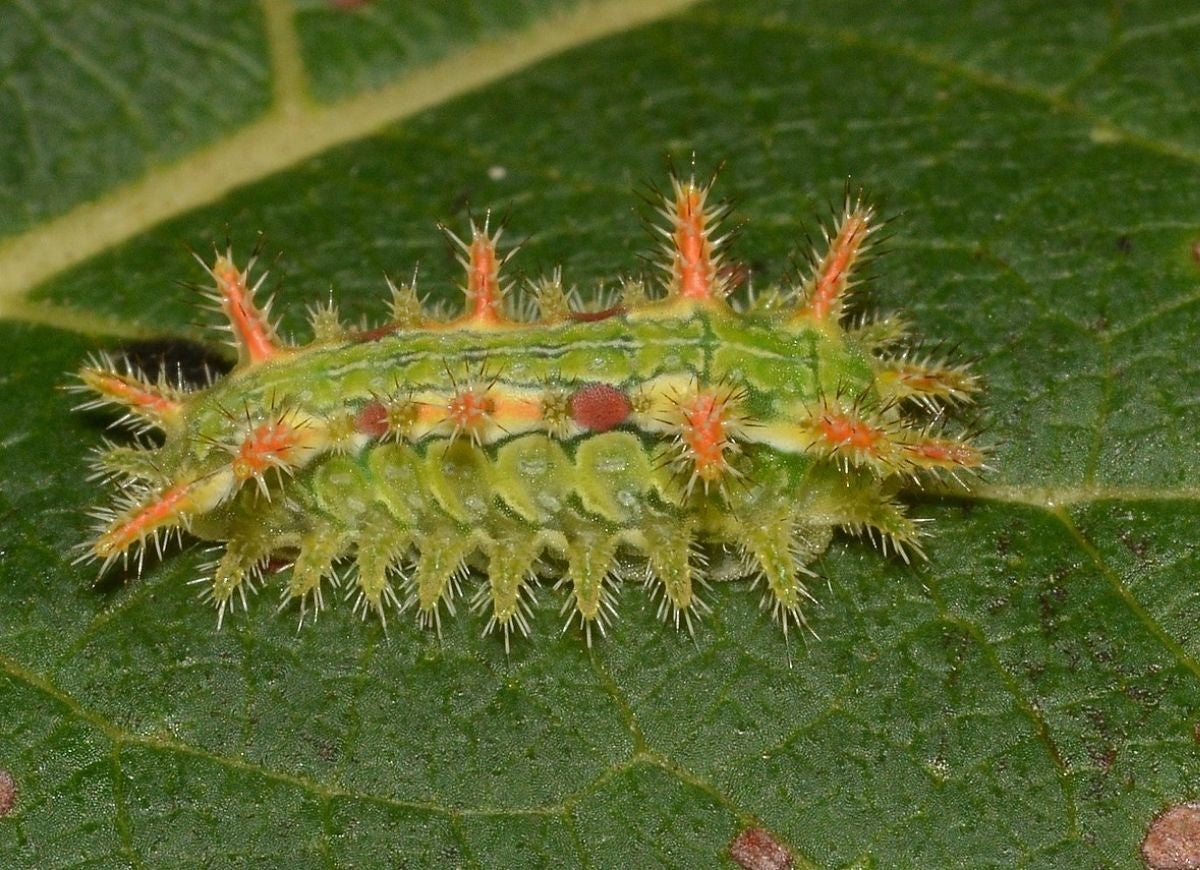
The spiny oak slug has stinging hairs on its many extended lobes. Their body features mottled stripes, making them a striking specimen. They typically hide on the underneath side of foliage, so they are difficult to detect until brushing the hairs. Most people experience a painful sting. However, there’s a small percentage of people who have a more serious reaction to the sting and may require medical attention. The good news is that these caterpillars are not particularly common, even though they are found throughout North America.
White Flannel Moth Caterpillar
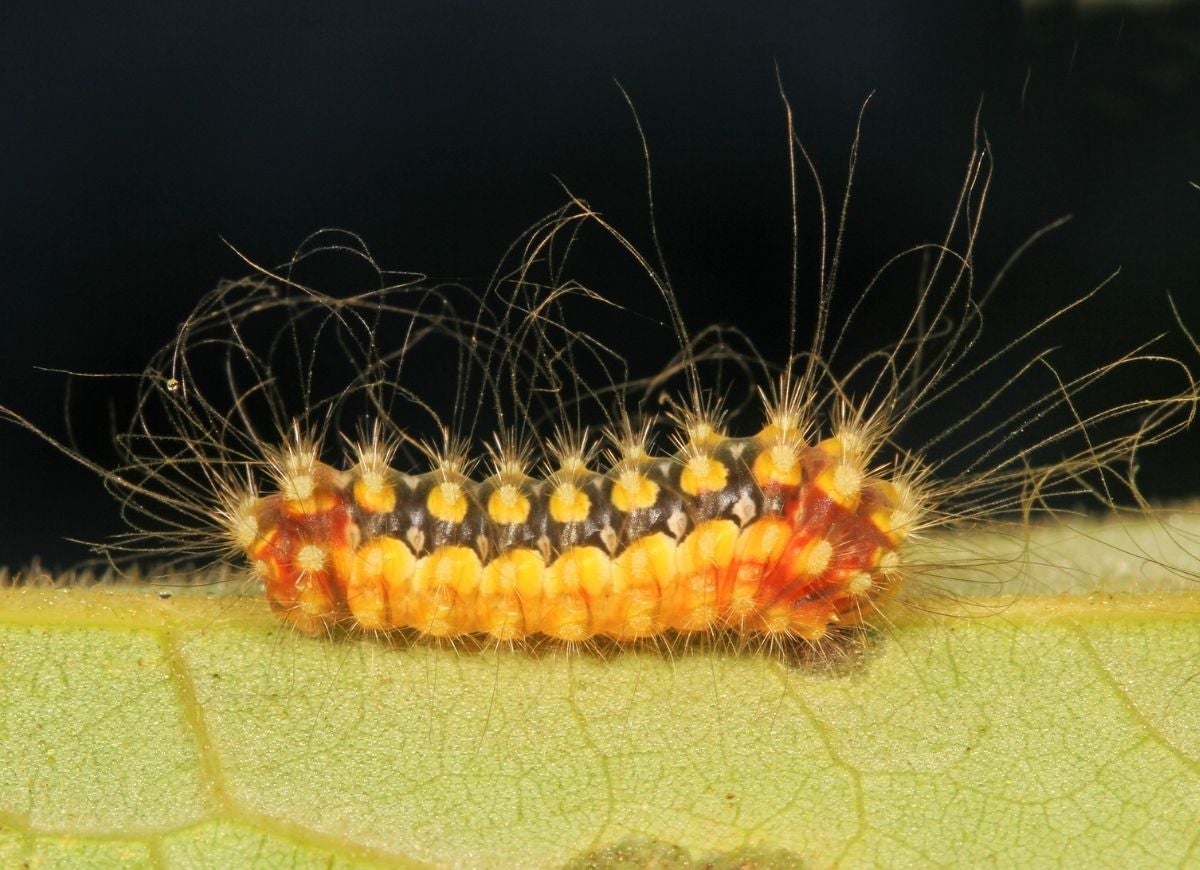
The black, yellow, and red-colored white flannel moth caterpillar has tufts of long hair coming out of its yellow mounds. Those long black hairs don’t sting, but the short hairs at the base of the tufts do. These caterpillars come out in late summer throughout southern, midwestern, and eastern areas of the United States. Once the caterpillar goes through metamorphosis, it comes out a silky white moth that’s not venomous whatsoever.
Monkey Slug Caterpillar
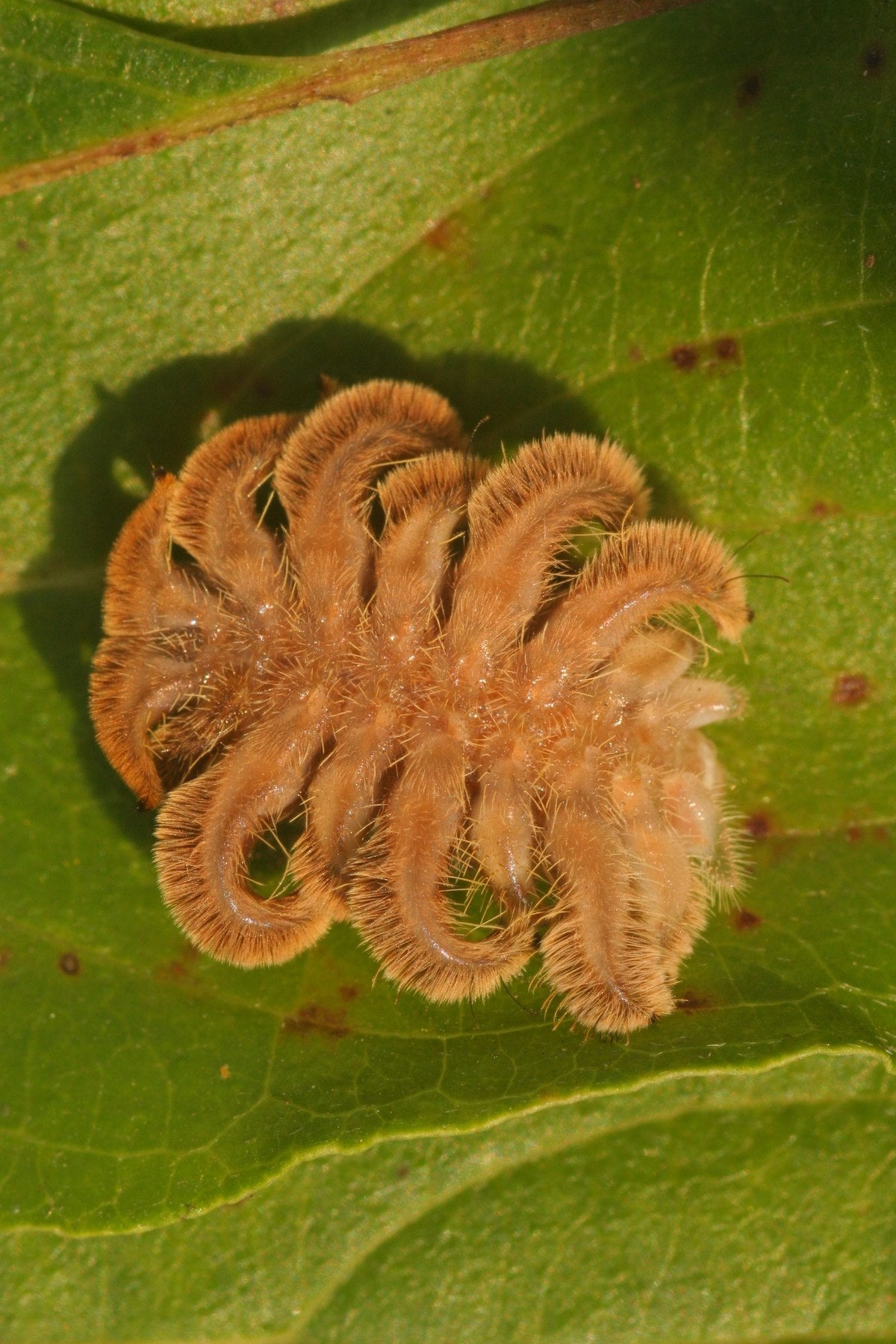
The monkey slug caterpillar doesn’t look much like a caterpillar or a slug, really. In a way, it resembles a crumbled, dying leaf. Its tentacles and thick hair disguise the sharp spines that house its venom. Most people wouldn’t want to pick up this strange creature because of its odd, arachnid-like appearance, but the stinging spines seal the deal on avoiding this New England native.
Buck Moth Caterpillar
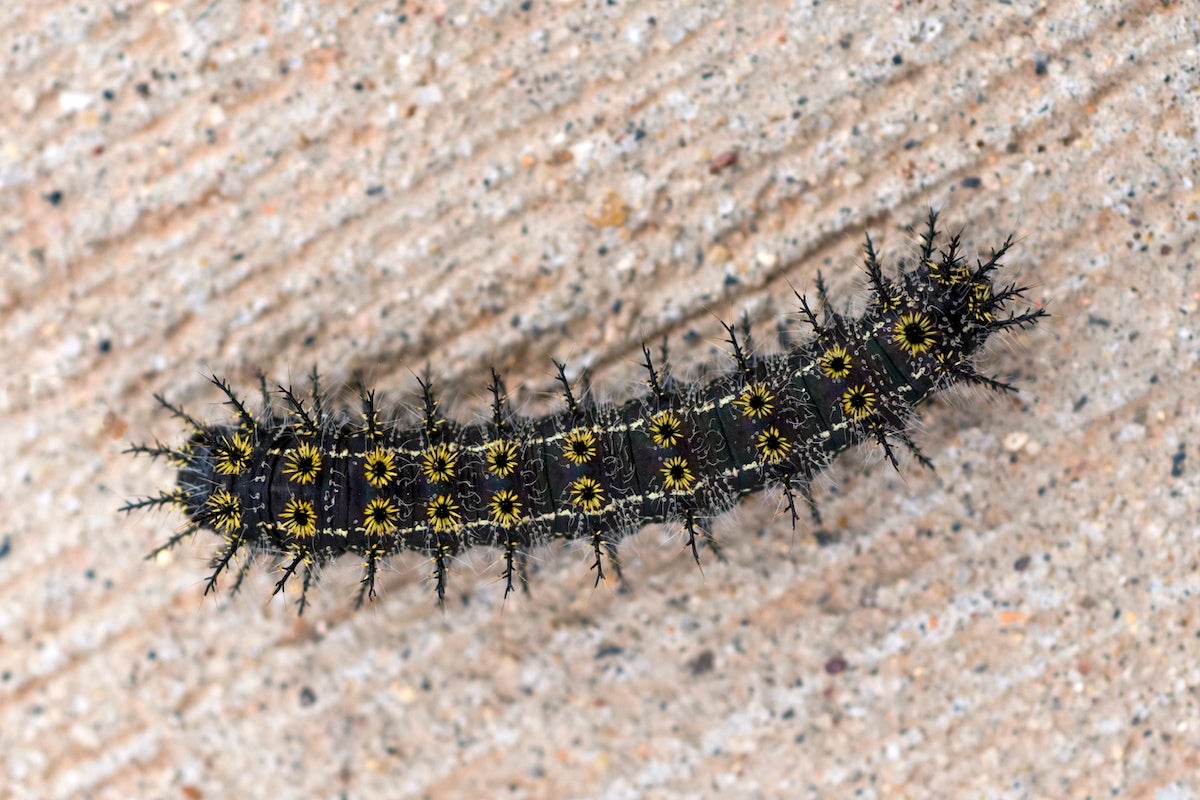
Buck moth caterpillars love the oak trees predominantly found in the eastern United States, but they also show up in some midwestern and southern states. These dark-colored caterpillars feature tufts covered in venomous spines that cause a red, stinging rash. They come out in the spring and are readily found in and around oak trees.

All You Need to Care for Your Lawn & Garden
Keeping your grass green and your plants thriving doesn’t just take a green thumb—it starts with the right tools and supplies.